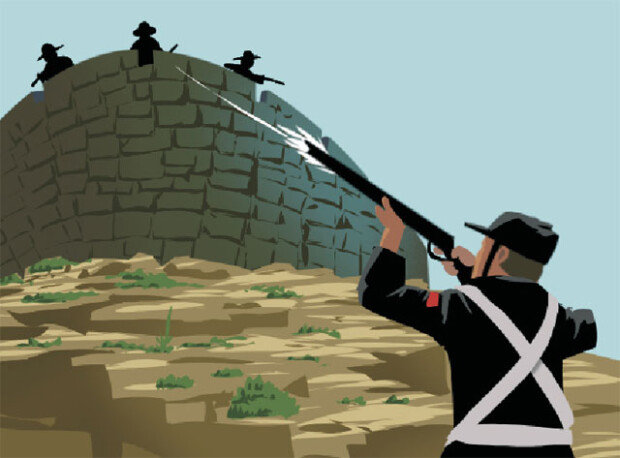Joseon’s fortress captured by rifles
Joseon’s fortress captured by rifles
Posted June. 04, 2019 07:37,
Updated June. 04, 2019 07:37

There was controversy over bricks at the royal court in the era of King Yeongjo during the Joseon Dynasty. Some suggested using bricks rather than traditional stone blocks to build a new rampart, which was part of a fortification project for Ganghwa Island to defend the capital of the dynasty initiated in the era of King Sukjong. Even today, bricks are widely used as an architectural material in China. However, soil properties in Korea have not allowed for high quality bricks. Back then, the idea to use bricks was proposed to adopt the cutting edge method of architecture for the fortification project following China, which Joseon would consider the world’s most advanced country at that time.
The Joseon leadership decided to test materials after a long controversy was resolved. The test was carried out on the strength of stone-made and brick-made fortresses by bombing a canon. The results unexpectedly proved stone-made walls stronger than bricks. Dubious about the test results, Joseon leaders sent technicians to China to learn how to make bricks. Indeed, China had its own special fabrication technique. Nevertheless, it proved once again that stone was stronger than bricks fabricated according to the Chinese method. Granite, easily found in Korea, has the highest level of strength among stone materials while limestone, used in Manchuria, is way more fragile than granite. For that reason, China replaced it with bricks and Joseon did not have to.
The fortress on Ganghwa Island, made of thick stone blocks, were stiff enough to weather attacks by new-type Western canons. However, Gwangseongbo fell to the invasion by the three U.S. warships in 1871 despite courageous resistance of the Joseon Army. One of the many reasons for the fall of Gwangseongbo was its height making it stand tall with the skies its backdrop. Joseon matchlocks could kill enemies within a distance of 50 meters, which made such surroundings advantageous to defense troops. Meanwhile, Western forces used steel wire rifles with an effective range of 200 meters, which thus made the outstandingly tall fortress an easy target. The stone wall was strong enough to withstand attacks but it lost to war tactics enabled by new types of weaponry. Already, it was an absurdity to look at the world from our own perspective even in the 19th century.







